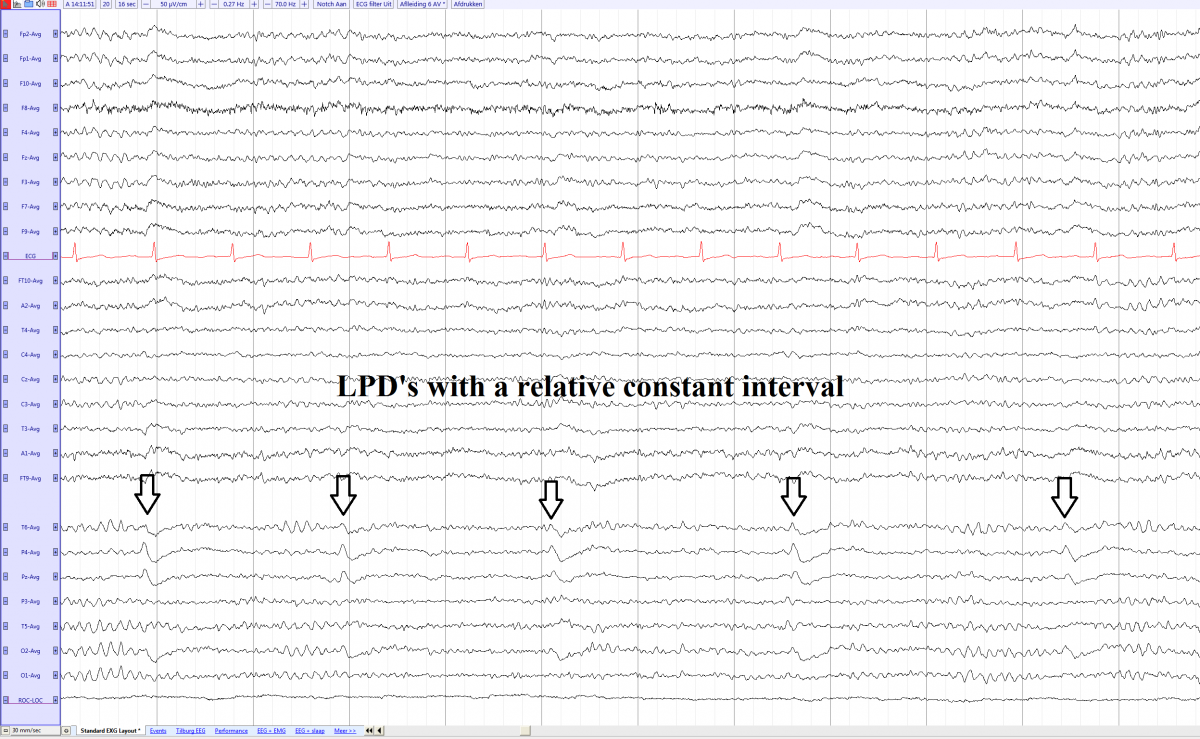LPD (lateralized periodic discharges)
From EEGpedia
Synonyme: PLED (Periodic lateralized epileptiform discharges)
- Lateralized: Unilateral
- Periodic: Relative constant interval between the discharges, which varies between 0.5 and 3 seconds (most often around 1 second)
- Discharge: Could be Delta waves or sharp waves with a “epileptiform” morphology
- If a more ictal appearance it can be categorized as LPD+:[1]
- +F: superimposed fast activity.
- +R: superimposed rhythmic or quasi-rhythmic activity.
- +FR: superimposed fast activity and rhythmic or quasi-rhythmic activity.
- LPD’s are seen in acute cerebral laesion
- Non specific:
- Acute cerebrovascular events
- Encephalitis
- Subdural hematoma
- Other structural lesions
- Non specific:
- Tend to disappear in weeks
- Higher risk of seizures (50-80%) in patients with LPD’s [2]
LPD's left parieto occipital in a male of 78 years old with a hemmorrhage left occipital (average)

Notes